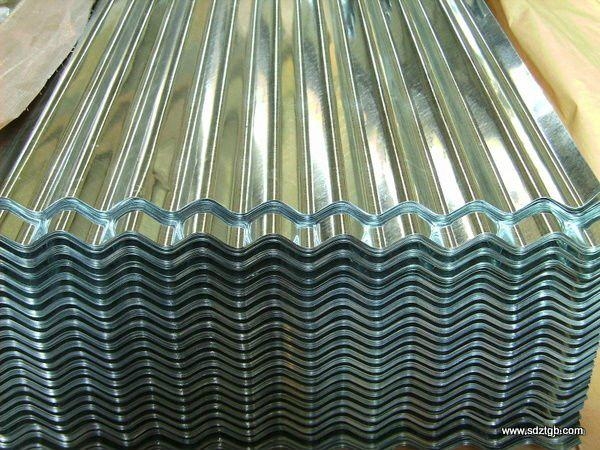-
Paper Information
- Next Paper
- Previous Paper
- Paper Submission
-
Journal Information
- About This Journal
- Editorial Board
- Current Issue
- Archive
- Author Guidelines
- Contact Us
Journal of Civil Engineering Research
p-ISSN: 2163-2316 e-ISSN: 2163-2340
2014; 4(3A): 135-137
doi:10.5923/c.jce.201402.23
Assessment of Pull-through Failure of Nail Connection for Rural Roofing System under Wind Load in Malaysia
Noram I. Ramli1, T. A. Majid2, F. A. Wan Chik1, M. K. A. Muhammad1, S. A. Che Deraman1
1Phd Candidates, School of Civil Engineering, Universiti Sains Malaysia, Nibong Tebal, Malaysia
2Coordinator Disaster Research Nexus, School of Civil Engineering, Universiti Sains Malaysia, Nibong Tebal, Malaysia
Correspondence to: Noram I. Ramli, Phd Candidates, School of Civil Engineering, Universiti Sains Malaysia, Nibong Tebal, Malaysia.
| Email: |  |
Copyright © 2014 Scientific & Academic Publishing. All Rights Reserved.
Roof collapse due to wind load impact on roof sheeting during thunderstorm event was reported by media. In most cases, failure of roof sheeting based on two points, either on material roof sheeting or at connection of roof sheeting. It was observed that the most failure of roof sheeting is likely occurred for non-engineered building. Base on MS 1553:2002 wind load for building structure, structural elements should be able to resist wind speed up to 32.5 m/s. Therefore this study is conducted to identify the possibility of the pull-through failure of nail connection with Corrugated Galvanized Iron (CGI) roof sheeting for non-engineered buildings. This study is focus on the connection between roof sheet metal and nail connection with various spacing between the connections. Finite Element Method was used in this study to analyse and identify the load distribution. From the result it shows that the maximum spacing of nail connection is 480 mm to resist the wind load recommended by MS 1553:2002. From the result it can be concluded that as the spacing of connection increases the failure of CGI metal roof also increases.
Keywords: Corrugated Galvanised Iron, Wind Storm, Rural Roofing
Cite this paper: Noram I. Ramli, T. A. Majid, F. A. Wan Chik, M. K. A. Muhammad, S. A. Che Deraman, Assessment of Pull-through Failure of Nail Connection for Rural Roofing System under Wind Load in Malaysia, Journal of Civil Engineering Research, Vol. 4 No. 3A, 2014, pp. 135-137. doi: 10.5923/c.jce.201402.23.
Article Outline
1. Introduction
- The rapidly increase in numbers of damage due to wind-related disaster events over the last few years in Malaysia has created the awareness among the Malaysian society. In order to enhance the resistance of the building structure to withstand wind storms, further understanding on characteristic of wind - structure interaction is needed. Malaysia is located near the equator. In general, the wind climate is dominated by the two monsoon seasons and the inter-monsoon thunderstorms. The north-eastern monsoon blows from December to March, usually accompanied by heavy rains. Around June to September, wind blows in the south-western monsoon which is slightly tranquil. Thunderstorms frequently occur during the inter-monsoon periods. Although thunderstorms are localized phenomena, they often produce significant strong and gusty surface winds. These winds from thunderstorms are relatively stronger and more turbulent than those of monsoon winds. [3] Unlike in cyclone prone region, the thunderstorms in Malaysia occurs in micro scale [4]. Despite their small size and short duration of thunderstorm which is about 15 to 30 minutes, many damages has been reported in Newspapers. From the previous study, roof was the most damaging components due to wind storm [5].
2. Failure in Rural Roofing System
2.1. Malaysia Climate
- Malaysia is a country located near the equator. It is equally important to know the flow pattern of wind across Malaysia is dominated by two major monsoons. The characteristic features of the climate of Malaysia are uniform temperature, high humidity and copious rainfall and they arise mainly from the maritime exposure of the country. The climate in this country is almost the same throughout the year. Though the wind over the country is generally light and variable, however there are some uniform periodic changes in the wind flow patterns across Malaysia. Flow pattern of wind system across Malaysia is dominated by two major monsoons. I. Southeast monsoon flow from mid-April until September. II. Northwest monsoon flow from early November until March.During the transition of two major monsoons, there are two shorter inter monsoon seasons. These two monsoons are transition between two major monsoons. In this transition monsoon, many thunderstorm events occur.
2.2. Rural Roofing Failure
- Numbers study or research on the wind load effect on the roof structure has been conducted overseas but very few towards Malaysian environment in Malaysia [6-9], (Tamura, et al., 2001, 2009, 2010; Uematsu and Isyumov, 1999). Most of the rural houses are considered as non-engineered structures. Corrugated Galvanized Iron (CGI) sheet metal is commonly used in rural house roofing system. However there are no specific guidance on how the sheet zinc metal are assemble. CGI sheet metal frequently experienced a pull-through failure during the thunderstorm due to uplift forces. According to Mahaarachchi & Mahendran [9] from the field and laboratory investigations have shown that damage of steel roofs has often occurred due to the failures of their connections. From the previous study, a single nail connection can be with stand up to 0.71 kN [10]. In this study, CGI sheet metal was examined under the variation wind load. SAP 2000 software was used to analyse the wind load effect of CGI sheet metal. This study focus on the effect of nail connection spacingson CGI sheet metal until failure. The usual CGI sheet metal and nail that widely used in Malaysia is shown in Fig 1a and Fig 1b. In this study the CGI sheet metal model are examined with various wind speed and spacing of nail connections.
 | Figure 1a. CGI Sheet Metal |
 | Figure 1b. Nail |
2.3. Equivalent Static Wind Load
- In this study Equivalent Static Wind Load (ESWL) are been considered. Newton first law says that force, F can be calculated from mass and acceleration as follows.
 | (1) |
 | (2) |
 | (3) |
2.4. Result and Discussion
- Table 1 shows, the value of force of each single point of nail connection for various spacing between nail connections. It clearly shows that as the distance between the connection increases, the force acting on each nail connection increases. From previous study [10] the maximum load before the pull through failure is identify at 0.7 kN. By using interpolation the 0.7 kN force will be estimated occur at the spacing between the nail connection of 480 mm. Consequently, the risk of pull through failure will occur if the spacing is greater than a 480 mm.
|
2.5. Conclusions
- From this study, it can be concluded that the spacing of the connection are very important in order to resist wind load. By increasing the distance between the nail connections will affect the performance of the CGI sheet metal roofing. Base on MS 1553:2002 the minimum wind load design is 0.65kN/m2. Hence, the nail connection should not be allowed greater than 480 mm in distance to complying the minimum wind load recommended by MS1553:2002.
ACKNOWLEDGEMENTS
- The research team thanks Universiti Sains Malaysia for the financial support from the Delivering Excellence Grant.
 Abstract
Abstract Reference
Reference Full-Text PDF
Full-Text PDF Full-text HTML
Full-text HTML